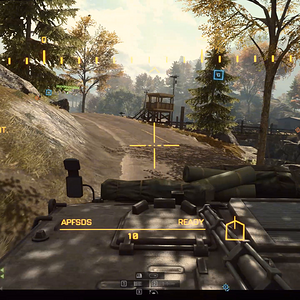I
irosario

In 1951, Indiana University hosted its first Little 500—a track cycling competition modeled after the Indy 500 and depicted in the 1979 Oscar-nominated film Breaking Away. But the first women’s race wasn’t held until April 22, 1988. The four freshmen riders of the victorious Willkie Sprint team—Kerry Hellmuth, Kirsten Swanson, Amy Tucker, and Louise Elder—were considered underdogs. In the following adaptation from her new book Willkie Sprint: A Story of Friendship, Love, and Winning the First Women’s Little 500 Race, out now from Indiana University Press, Hellmuth recounts the first few laps of that historic day.

(Photo: Indiana University Press)
Buy the Book
“Ladies, mount your Roadmaster bicycles!” As grand marshal, the dean of women’s affairs, Phyllis Klotman, delivered the cherished command that signaled the start of the women’s inaugural Little 500 race. It had been adapted from the traditional phrase issued to start the men’s race over the past 37 years—replacing “gentlemen” with “ladies.” It was met with a rousing cheer and the release of what seemed to be a hundred balloons from the infield. It was the moment launching the show that everyone was gathered to watch, the race that had been years in the making.
As the eighth qualifier, our starting spot was located in the center of the third row, right in between riders from the Notorious and Kappa Delta teams. I wished them both good luck in the race as we each mounted our bicycles. I was happy to be starting in front of over 20 teams. Once the race started, I planned to settle into the second row of riders, getting a free ride in the draft of the first-row riders. Staying up front would help me avoid crashes caused by jockeying for position mid-pack. I figured that I would get through the first few laps before looking for opportunities to start our effort of lapping the pack, toward the end of my shift.
The mood shifted in the pack during the pace lap. The pace car took us through the second turn before it accelerated and raced ahead of us, past the start line, and exited from the track. We passed Chappy Blackwell ceremoniously waving the green flag. We were off!

Cyclists race during the first women’s Little 500 on April 22, 1988, at Indiana University. (Photo: Indiana University Archives)
The roar of the crowd replaced that of the pace car’s accelerating engine. The noise reminded me of the IU football games, thousands of college students screaming their lungs out. I later found out that it was truly thousands. The total number in attendance at the inaugural women’s Little 500 was, in fact, reported to be over 15,000 spectators. The turnout wildly exceeded expectations and fully confirmed the validity of the women’s edition. It was a rowdy crowd to boot. After months of practicing at the track with no crowds, the sheer volume was amazing.
Apparently I was not the only one motivated by the cheering. Instantly, my fellow riders swarmed up and into position on both sides of me. The race started fast, but I felt like a diesel engine—not yet up to speed. It took me a nervous lap or two to get my rhythm. What a relief when I felt my legs kick in. Cyclists say that if you are not moving forward in the pack, then you are moving backward. By the time I was running all systems full gas, my lethargic start had left me buried in the middle of the fourth row, not where I had wanted to be. I worked my way over to the outside of the pack and started moving forward. Riding on the outside made for easier mobility since I was no longer locked in. It also meant that I had more ground to cover than those on the innermost lane. I decided to move up and take the inside lane. I could see the Theta and Alpha Phi riders leading the race. I needed to be closer to them.
The total number in attendance at the inaugural women’s Little 500 was, in fact, reported to be over 15,000 spectators. The turnout wildly exceeded expectations and fully confirmed the validity of the women’s edition.
At the end of lap four, as we were heading down the front stretch, a rider to my left suddenly swerved so close to me that our handlebars started to lock. Simultaneously, I heard screams and the undeniable sound of bicycles crashing. Never a sound you wanted to hear. I shoved down my instinct to panic and tried to stay relaxed as I straightened up, calmly detached myself from the rider leaning against me, and started to move forward.
The sound of that crash behind me was all I needed to hightail it straight to the front of the pack, which is where I found myself within one half lap. First I led the pack alongside the Theta rider, who had been leading the pack essentially since the race began. Then I was solo leading the pack.
As a result of the crash, the yellow flag was displayed as riders scrambled to get back on their bikes and mechanics hurried to bring new bikes to the scene. The yellow flag meant all teams had to slow down and maintain their positions relative to the lead rider, which at that point was me. Normally I shunned taking the lead because I liked tucking into the wind-protected pack. Hearing that crash though and having that rider’s handlebars hook onto mine, I decided to put a premium on staying clear of others entirely. It simply was not worth risking a crash.
We rode several laps under the yellow flag. I stayed up front, within the first couple of riders. As suddenly as it arrived, the yellow was gone and we were back under the green flag and normal racing conditions. On the tenth lap of the race, our coach Kevin signaled that I would be doing an exchange. I wanted to leave a nice-sized gap before I got off the bike, to make sure we stayed at the front. Thus I took a long flyer off the front, for three-quarters of a lap, before coming out to exchange to Louise. With the resulting gap, I figured Louise would have plenty of time to hop right back into the lead of the race.

Three neck-and-neck cyclists race at the women’s Little 500 on April 22, 1988, at Indiana University. (Photo: Indiana University Archives)
The exchange did not go well. My speed was faster than hers, and we did not equalize our speed before I released the bike. She grabbed at the bike, which swerved and fell. She moved as quickly as she could to pick it up and get moving again. I had tried to give her a sizable gap so she wouldn’t have to enter at the rear and fight her way back up through the pack. In the end, the gap served another purpose. She had more time to pick up the bike and make up the time lost on our botched exchange. She was passed by the loose, strung-out pack of riders but chased fervently to catch back up.
“Looks like the Willkie Sprint rider is struggling to get back to the pack,” said the booming voice of the announcer. Louise later told me that she heard this announcement and it angered and embarrassed her. While she felt that her reentry to the pack was guaranteed—she could see the tail end of the peloton getting closer—this announcement lit a fire under her. Usually cyclists ride in a tight peloton. The word is derived from French, and it also means “small ball,” which is how a compact peloton looks traveling around the track. Louise not only powered back into the peloton but also worked up the outside of the peloton over the next few laps until she tucked into the first spot behind the leader.
“Perfect, Louise,” I heard Kevin say to himself. From that point on, she stayed in the sweet spot of the peloton, riding up front in the second row of cyclists. There she could both conserve energy by drafting and stay out of danger.
That, in a few words, is the biggest factor in making decisions in a bike race. Any cyclist riding in a race is constantly seeking to conserve energy for the final sprint. The best way to conserve energy is to use less of it by riding in the draft of another rider. I had learned about the benefits of drafting from an article in a cycling magazine. Wind tunnel testing on aerodynamics had demonstrated that riders who were well-positioned could reduce anywhere from 27 percent to 50 percent of the wind resistance involved in moving forward, depending on variables like the size and bike positioning of the lead rider, how closely the drafting rider follows the lead rider’s wheel, and the direction of the wind. The drag reduction translates to a huge amount of energy saved. Of course, the amount of energy saved is relative to how much wind exists and to the speed being traveled. The faster you are moving and the stronger the headwind is, the more you benefit from drafting.
The only moment that matters is your position at the end of the race, so it makes sense to conserve energy to the utmost degree possible until that moment. Our race was a bit more complicated because the Little 500 was a sort of relay race. We wanted to conserve energy, yes, but only one of us would need to conserve it until the end of the race. The other three teammates could burn their energy during the earlier laps. In fact, that was actually the point. You wanted all your energy, everything you had to give, left on the track that day.
Later, when I came out for an exchange with Kirsten, we led the race by nearly half a lap. Coming in fast, I barely stopped in time. My feet skidded to a stop right before the line, and I had to lift the bike off the ground to keep it from crossing the line. I swung the bike to a stop on the other side of my body. I checked on Kirsten and saw that she had already settled into a fast pace. She leaned low over the bike, minimizing the air resistance. I made sure no one was arriving for an exchange and turned to head back into our pit, which I found bubbling with tense emotion. It was even stronger than the palpable hope the night before, because here we were, doing it. We had a long way to go. The race was only nearing the halfway mark. Anything could happen. But still, we were in front. We had them all on the run. Don’t be afraid to win. I dared to believe.
The post This Rookie Cycling Team Wasn’t Supposed to Win appeared first on Outside Online.
Continue reading...







